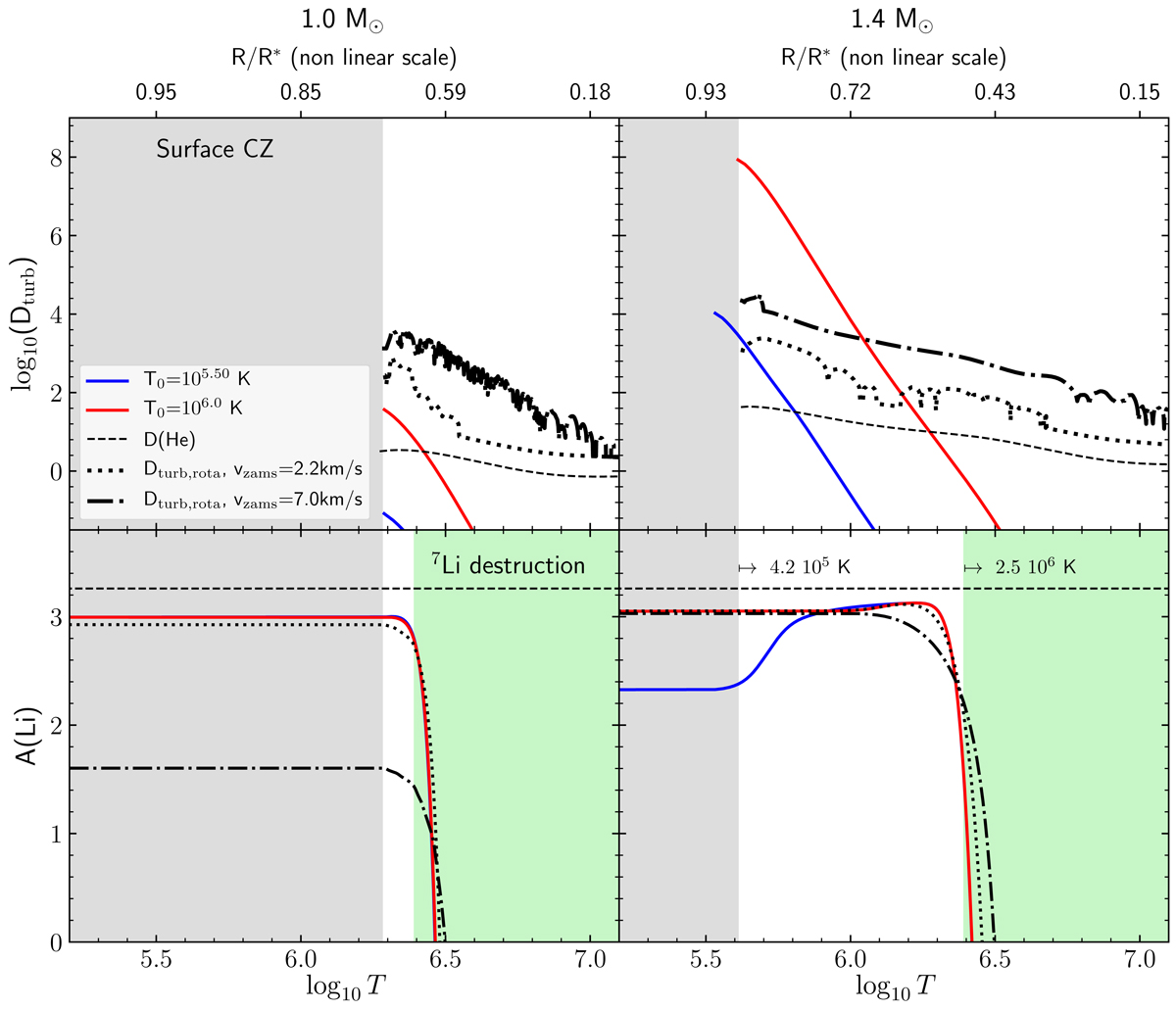Fig. 4.

Depth-dependent profiles of the atomic diffusion coefficient according to Eq. (5) (upper panels) and Li abundance (lower panels) as a function of local kinetic temperature for two stellar models with masses of 1.0 M⊙ (left panels) and 1.4 M⊙ (right panels). Both models have an initial metallicity of [Fe/H] = −0.05 dex and an age of 2.5 Gyr. The profile of the atomic diffusion coefficient of He, commonly used as a reference value, is depicted with a dashed line. The blue and red lines correspond to different choices of the reference temperature T0 (see also Eq. (5)) resulting in different turbulent diffusion coefficients, and therefore in more (red line) or less (blue line) efficient turbulent mixing. The profiles of rotational mixing, computed using the zero-age main-sequence velocity of υ = 2.2 and 7.0 km s−1, are indicated with the dotted and dash-dotted lines. On the lower panels, the same profiles are shown in the units of predicted Li abundance, depicting how Li abundance would change if affected by the prescribed mixing. The grey shaded areas represent the sub-surface convective zone and the green shaded areas mark the inner regions (at R/R * ⪅0.6 (1 M⊙) and R/R * ⪅0.5 (1.4 M⊙)) where Li is destroyed by nuclear reactions. For more details, we refer the reader to Sects. 4.2 and 4.3.
Current usage metrics show cumulative count of Article Views (full-text article views including HTML views, PDF and ePub downloads, according to the available data) and Abstracts Views on Vision4Press platform.
Data correspond to usage on the plateform after 2015. The current usage metrics is available 48-96 hours after online publication and is updated daily on week days.
Initial download of the metrics may take a while.


